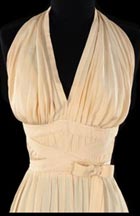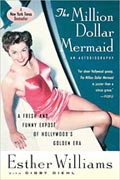 Many years ago, we attended a “Hollywood: Legend and Reality,” an exhibition of movie memorabilia from the Golden Age of Hollywood at the Cooper-Hewitt National Design Museum. The exhibition included such offerings as an eight-inch gorilla figure used in the filming of the original King Kong, the golden calf from Cecil B. DeMille‘s The Ten Commandments, Rudolph Valentino‘s matador costume from Blood and Sand (1922), Tom Mix‘s 10-gallon hat, and best of all, for our money, Sam’s piano from Casablanca. We wanted so badly to reach out and tinkle those tiny keys (the piano’s a miniature, with something fewer than 88 keys, sized so that it might be easily pushed from table to table in a nightclub, as Dooley Wilson does in Rick’s Cafe.
Many years ago, we attended a “Hollywood: Legend and Reality,” an exhibition of movie memorabilia from the Golden Age of Hollywood at the Cooper-Hewitt National Design Museum. The exhibition included such offerings as an eight-inch gorilla figure used in the filming of the original King Kong, the golden calf from Cecil B. DeMille‘s The Ten Commandments, Rudolph Valentino‘s matador costume from Blood and Sand (1922), Tom Mix‘s 10-gallon hat, and best of all, for our money, Sam’s piano from Casablanca. We wanted so badly to reach out and tinkle those tiny keys (the piano’s a miniature, with something fewer than 88 keys, sized so that it might be easily pushed from table to table in a nightclub, as Dooley Wilson does in Rick’s Cafe.
Looking back, we’re now left wondering if a number of the artifacts in that exhibition weren’t loaned by Debbie Reynolds. Reynolds long held out hope that her extensive (to put it mildly) collection of Hollywood memorabilia would one day be housed in a museum, but with no funding forthcoming, she’s now auctioning much of it off. The sale is to be held on June 18.
“My lifetime dream has been to assemble and preserve the history of the Hollywood film industry. Hollywood has been an enormous part of my life as I know it has been for countless fans all over the world. This collection represents a lifetime of collecting Hollywood artifacts and this is a rare opportunity to own a piece of Hollywood History for those who love the movies as much as I do. For the first time in nearly five decades, these iconic pieces will be made available to the public through a series of auctions presented by Profiles in History beginning in June 2011.”—Debbie Reynolds
It’s hard to name a star who’s not represented in Reynolds’ collection. Humphrey Bogart? A brown sport coat he wore in Knock on Any Door (1948) is up for auction. Harpo Marx? One of his familiar top hats with attached blonde wig is included (it was a gift from Harpo to Reynolds many years ago). Judy Garland? There are no fewer than seven items associated with her up for sale, including the blue dress she wore playing Dorothy Gale in The Wizard of Oz.
 We could go on and on. It’s a very impressive collection, and frankly, it’s heartbreaking that these amazing pieces will now go into the hands of private collectors, quite possibly never again to be enjoyed by the general public. It’s a crying shame that the collection couldn’t have been kept together and placed on permanent exhibition somewhere, anywhere.
We could go on and on. It’s a very impressive collection, and frankly, it’s heartbreaking that these amazing pieces will now go into the hands of private collectors, quite possibly never again to be enjoyed by the general public. It’s a crying shame that the collection couldn’t have been kept together and placed on permanent exhibition somewhere, anywhere.
The official website for the auction has much more information (if you’re in the Los Angeles area, you should make it a point to attend the public previews that precede the sale; who knows when you’ll again have the opportunity to see these treasures?). There’s also a bound catalogue for sale on the website for $39.50, but for those of us for whom even that is a bit more than we’re comfortable spending, there’s a PDF catalogue for the downloading, too.





